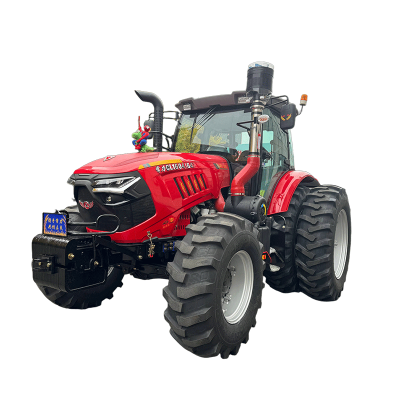Six Major Breakthroughs in Global Agriculture
In the past year, a number of major breakthroughs have been ushered in the global agricultural sector, and innovations such as gene editing, robotics, and vertical farming are reshaping the agricultural production model and driving global agriculture towards a new era of intelligent and sustainable development. These breakthroughs show that the link between technology and agriculture is closer than ever. Innovations in genomics, automation, vertical farming, precision livestock management, artificial intelligence, and biocontrol are transforming traditional agricultural production methods, improving productivity, and paving the way for a sustainable future.
Across the globe, researchers and farmers are working hand-in-hand to push the boundaries of food production, sustainability, and resource management, and these breakthroughs are shaping the future of agriculture.
Utilizing advanced genomics and gene editing technologies to improve crop resilience.
One of the most exciting advances in agriculture in 2024 will be advances in genomics and gene editing, with CRISPR, a groundbreaking gene editing tool that allows scientists to precisely modify plant DNA to increase crop resistance to pests, diseases, and environmental stresses. Researchers have used CRISPR to produce crop varieties that are not only more drought-resistant, but also thrive in high-salinity soils. This is critical for regions that face water scarcity and soil degradation.
Robotics and automation redefine labor efficiency.
In 2024, agricultural robotics took a huge leap forward, making it increasingly easy for farms of all sizes to use autonomous machines and robotic systems. Today, robots are able to assist farmers with labor-intensive tasks such as planting, weeding, harvesting, and even monitoring crop health. This technology reduces reliance on seasonal labor while enabling more accurate and efficient farm management. A standout result this year is the rise of weeding robots that utilize AI technology to differentiate between crops and weeds.
Large-scale vertical farming.
Vertical farming has been in the spotlight for years, but in the past year it finally gained momentum at a commercial scale. Advanced LED lighting technology, optimized hydroponic systems, and AI-powered climate control systems are helping vertical farms become more energy efficient and effective than ever before. Vertical farming projects are expanding in urban centers, transforming unused warehouse space into highly productive and climate-controlled farms. Capable of producing crops year-round with minimal water and no pesticides, these farms provide a sustainable solution for food deserts in urban areas while reducing the food miles generated by transportation in traditional agriculture.
Precision Livestock Farming.
For the livestock industry, this has also brought innovations in precision farming technology aimed at improving animal health and welfare while reducing environmental impact. One major breakthrough is the growing use of animal wearable activity trackers that provide real-time data on animal health, behavioral performance, and even methane emissions. With these devices, farmers are able to monitor each animal individually and intervene as soon as an animal shows signs of illness. In addition, methane capture systems are becoming more efficient, converting methane emissions from livestock into energy that can be used on the farm. By reducing methane emissions, these systems not only help reduce the carbon footprint of agriculture, but also provide a renewable energy source.
Enabling data-driven agriculture with AI and IoT.
Artificial Intelligence (AI) and the Internet of Things (IoT) are playing an increasingly important role in agriculture.2024, we are witnessing a proliferation of AI-driven platforms that help farmers make data-based decisions. From predicting the best time to plant seeds to managing irrigation and creating fertilizer schedules, AI systems are able to analyze large amounts of weather, soil, and crop data and provide tailored recommendations for each piece of farmland. Combined with IoT sensors, farmers have access to precise, real-time data that allows them to monitor soil moisture, nutrient levels, and even crop growth patterns with unprecedented accuracy.
Enhanced biological control tools for sustainable pest management.
Sustainable pest management has always been a challenge for farmers who are committed to reducing their use of chemical pesticides. Biological means of control - i.e., the use of natural enemies, parasites, or pathogens that target specific pests - have received increased attention. With advances in biotechnology, biological control products now have a longer shelf life and are more adaptable. For example, fungal biocontrol agents for pest control have shown increased efficacy and stability even under harsh environmental conditions.
- IN THE PREVIOUS : Analysis of the Impact of the Latest Dynamics of the Tractor Industry and Internationalization Policies on Enterprises' Exports
- THE NEXT ARTICLE : Global orders continue to pour in! Delegations from multiple countries visit the site to witness the highly efficient production capacity.




